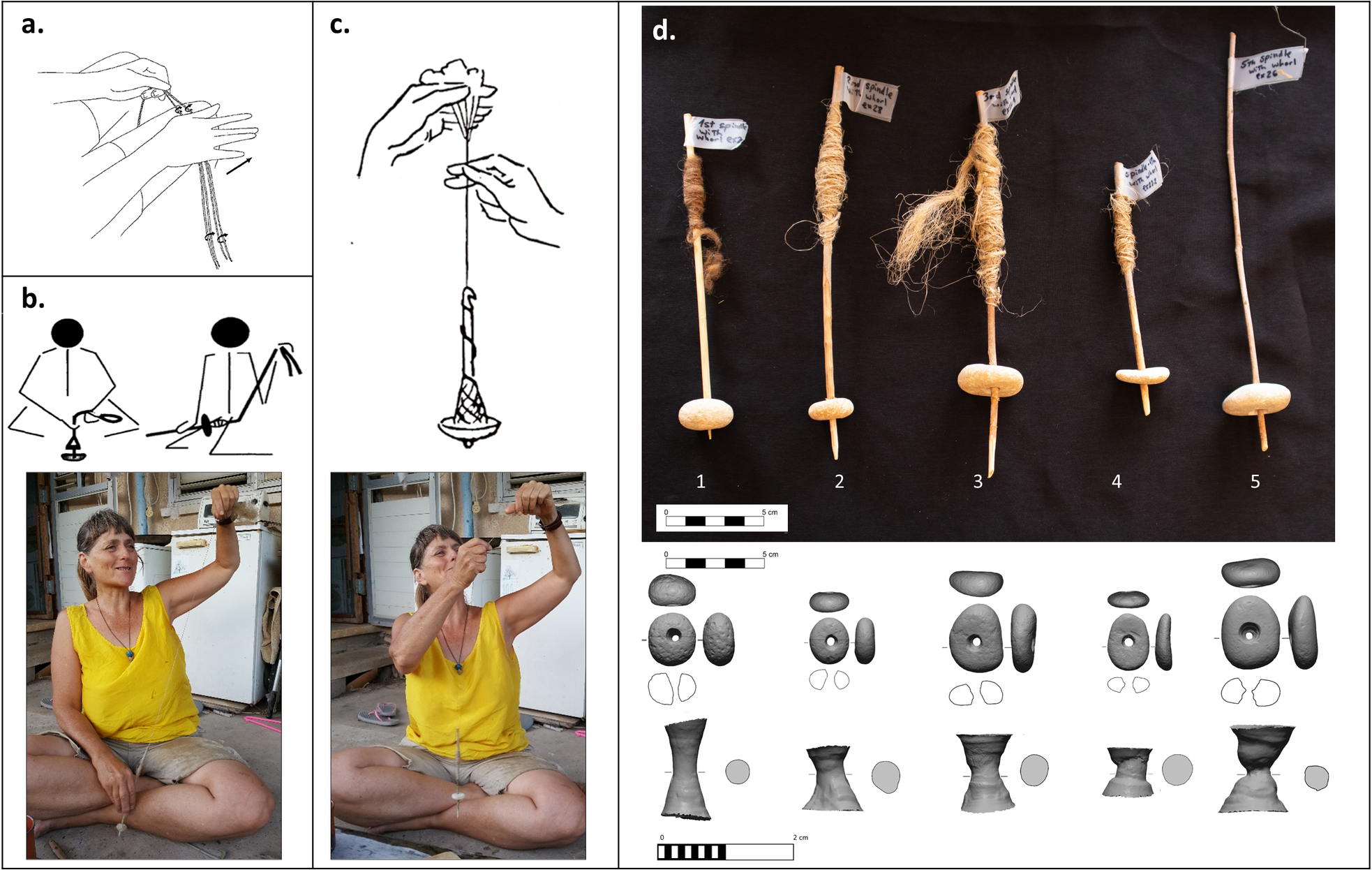Around 6,000 years before the Bronze Age cart wheel was invented, a group of textile makers in the Middle East may have designed the world’s first rotational tool involving a wheel and axle. After testing out replicas of the ancient devices, the authors of a new study suggest that they were functional spindle whorls that could be used to spin fibers into yarn, and may have paved the way for the eventual use of wheels for transport.
Uncovered at the Natufian settlement of Nahal Ein-Gev II (NEG II) in modern-day Israel, the perforated limestone pebbles date back to 12,000 years ago during the Epipaleolithic period, which preceded the Neolithic. Since 1972, archaeologists have uncovered 113 of the punctured artifacts at the site, although their function had until now remained unclear.
“The most beautiful ones, if you give them to later period experts, they would automatically say, “Oh, that’s a spindle whorl”,” study author Talia Yashuv of the Hebrew University of Jerusalem told IFLScience.
Spindle whorls are round weighted objects that attach to a spindle stick, enabling it to spin faster than one would be able to achieve manually, thus facilitating the process of spinning fibers into yarn. However, the fact that the pebbles at NEG II are not uniformly round or perfect in their proportions raises questions as to whether this was truly their purpose.
“And the fact that [this technology] is so early made us look into each and every characteristic and try to explore if it is really functional,” continues Yashuv. “And the answer is yes.”
To conduct their analysis, the researchers first created 3D models of the perforated stones, enabling them to examine their physical properties in detail. “Considering all functional parameters: the central location of the perforation, the size and weight of the stones, their shape, raw material, the shape of the holes and their size, it seems that the perforated pebbles from NEG II are best suited to have functioned as spindle whorls,” write the study authors.
To verify this hypothesis, the team then recruited the help of Ms Yonit Kristal, “an acknowledged expert in traditional craftmaking”, to see if she could successfully spin yarn using a replica of one of the prehistoric pebbles. During initial trials with wool, the spindle whorls were difficult to use but still made the process more efficient than manual spinning.
Later tests involving flax, however, were much more successful and enabled Yonit to make faster progress.
“We conclude that these items could have served as spindle whorls to spin fibers,” write the researchers. “In a cumulative evolutionary trend, they manifest early phases of the development of rotational technologies by laying the mechanical principle of the wheel and axle,” they add.
Interestingly, however, the technology did not immediately take hold or spread, and many millennia would pass before the concept was re-adopted during the invention of the pottery wheel and cart wheel. “It was really successful for the settlement of Nahal Ein-Gev II, but it’s not an innovation trend that we see from that point onwards,” says Yashuv.
“They went back to something else, and we don’t see the same tool for another 4,000 years. When it comes back, what’s interesting is that it’s at a site that is very close by,” she adds. “The next evidence is 4,000 years later, ten kilometers [6.2 miles] apart.”

The ancient spindle whorls were particularly effective for spinning flax.
It was only after this re-emergence that the principle of a rotational axle began to spread and become incorporated into more technologies.
Talk about reinventing the wheel!
The study is published in the journal PLOS One.
Source Link: 12,000-Year-Old Spinning Pebbles May Have Set Humanity’s Wheels In Motion